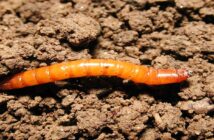As wet weather prevails across large parts of the UK, the durability of molluscicide pellets is increasing in importance as growers look to protect cereal seedlings from slug attack.
Slug pressure was extremely high during the 2023-24 growing season and a lack of sustained dry weather during the summer, particularly in the southern half of Britain, has helped maintain populations.
ProCam agronomist Paul Gruber, who advises growers across Oxfordshire and Buckinghamshire, says that so far this season careful monitoring and targeted slug pellet treatments have been essential for oilseed rape crop survival.
Heading into the second half of October, Paul notes very little cereal drilling progress has been made after the deluge in late September, but when it does commence in earnest, he believes slugs could be a significant theat.
“Crops are going to be drilled later and will be slower to establish. If the pressure remains high, then crops could potentially be vulnerable for longer.
“The drive towards less cultivation is also favouring slugs and where discs drills will be working in suboptimal conditions, establishment could be tricky,” he adds.
Paul is advising his clients to monitor fields earmarked for winter cereals now and where thresholds are exceeded (four per trap), apply pellets as soon as possible.
Continued monitoring and reapplication of pellets will be required until seedlings start to tiller (GS21), when they become less vulnerable to economic damage.
“Formulation will be key. If conditions remain catchy, larger wet-processed durum wheat-based pellets will prove their worth. They are more durable in the rain and aren’t ingested as quickly, so potentially kill more slugs.
“I’d also recommend aiming for a minimum of 40 baiting points/m2,” says Paul.
Certis Belchim’s Gloucestershire-based technical manager James Cheesman agreed that formulation and baiting points will be important considerations given the prevailing conditions.
He adds that a premium product like Sluxx HP fits the bill, because of its durable pasta-based pellet. The formulation also contains a unique chelating agent that remains effective for longer in challenging conditions.
“The chelating agent is the vehicle that gets ferric phosphate into the gut of the slug and trials have shown that the EDTA type used in other pellets leaches away much faster than EDDS when exposed to rain. That extended efficacy could be critical this year.”
James says that a 5kg dose of Sluxx HP delivers 42 baiting points/m2, with the higher 7kg/ha delivering 59/m2.
He adds that correct application is an important factor in achieving those numbers across the treated area and better-quality, larger pellets will spread more evenly than cheaper formulations.
“Also, make sure applicators are set up correctly and calibrated for the product you are using, and consider environmental conditions when spreading pellets. Windy days can result in a poor spread pattern.
“Certis Belchim’s online Calibration Wizard is a useful tool to help operators find the right settings for most applicators when using our range of slug pellet products.”




